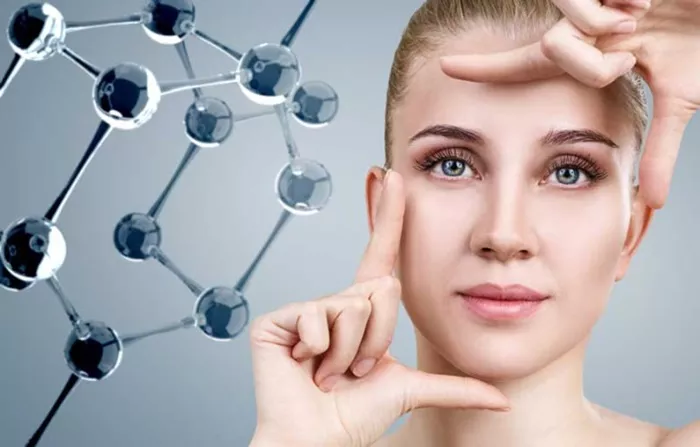Although exosomes have been used in clinics and doctors for skin treatments for several years, none of us may have heard of them. Now that skincare brands have started using them in their products, those who are committed to improving their complexion will be familiar with them.
Exosomes occur naturally in the human body and are tiny vesicles – fluid-filled structures, almost like miniature water balls – that are responsible for transporting proteins and lipids between cells. What makes them particularly useful is that they can also communicate with cells.
According to Dr Jonathan Dunn, consultant plastic surgeon and founder of Montrose Aesthetic Clinic in London, which uses plant-based exosomes, “they can stimulate the production of substances such as collagen and elastin, which are essential for healthy, youthful skin”.
Both collagen and elastin gradually decrease as we age. But when exosomes find old cells, they prompt them to rejuvenate.
Cell rejuvenation products are not new – retinoids, for example, have long been praised for their ability to promote the production of new skin cells. But exosomes work better if applied topically, says Rebecca Cullen-Smith, director of education at skincare brand Dermalogica.
The company recently launched Exo Booster, which contains exosomes made from bacteria. These exosomes are biocompatible with our skin and work just as well or better than bovine or human exosomes, which are popular in Asia but not legal for cosmetic use in the UK, she says.
The difference between retinoids and exosomes is that “retinoids can signal cells to turn biological processes on or off by binding to specific receptor proteins, thereby promoting effects such as enhanced collagen production,” while “exosomes are much more complex in structure.
They not only signal to cells, but also deliver key biological ingredients needed for specific functions.” In other words, they can stimulate cells to perform actions such as producing collagen and increasing elasticity. (They can also help suppress inflammation, promote tissue repair, and boost tissue regeneration, according to a paper published last year in the International Journal of Biological Sciences.)
What changes will you see when you look in the mirror? Beyond the brightening and lifting effects of a facial or microneedling treatment (which typically uses exosomes like a serum), not much—they don’t immediately change the appearance of your skin the way dermal fillers do.
But over time, these treatments should improve as the skin’s natural repair process is kicked on and accelerated, smoothing fine lines, improving skin texture and tone, and leading to a plumper, fresher complexion.
This usually happens within a month of treatment, counselors say. (A third-party clinical trial comparing microneedling alone to microneedling with exosomes showed that exosomes significantly reduced wrinkles by up to 86% after three weeks.) For lasting results, three sessions are recommended.
Katharine Mackenzie Paterson, a London-based facialist who has started offering bacterial and plant exosome treatments to clients, says they can also calm inflammation and repair damaged skin, “so they’re great for anyone with sensitive or allergic skin”.
After trying out the exosome treatments from Dermalogica and KMP for a few weeks, both of our testers confirmed that their skin was getting better day by day. “It’s like you’ve been sleeping for eight hours,” one said, and both testers said they barely had to wear foundation after their first session. Isn’t that what we all want? Not a new face, but a new face.

